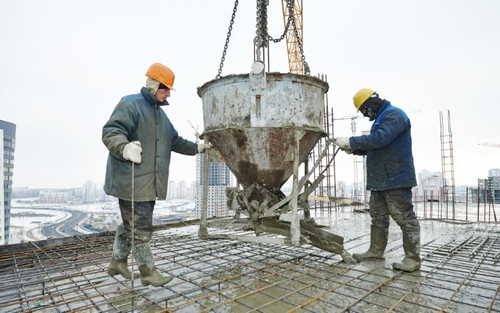Winterize Your Work Site and Avoid Injuries
As the rest of the world retreats indoors, some of us still have to go to work. Winter weather can be a danger to your employees in more ways than one. When spending time outdoors in cold or icy weather, you need to protect yourself from common hazards, such as frostbite, slips, falls, hypothermia, dehydration, cold stress, and even snow blindness. From everyday jobs to large-scale industrial operations, learn how to prevent winter weather-related injuries.
Protect Workers with Winter Workwear
Everyone working outdoors will need to wear the proper gear, including gloves, boots, hat, and multiple layers for additional insulation. It’s best to use waterproof winter workwear when working in wet conditions. Cold weather work gloves should come with a strong grip for holding and working with tools. Look for boots with thick tread patterns for maintaining stability and control in slippery settings.
When working with a team, assess the needs of your workers before bringing them outside. Keep plenty of sizes and styles of workwear on hand to make sure everyone has access to the proper gear. Some people may need to wear larger sizes when combining multiple layers. Give workers time to adjust any problems before starting their shift. Watch out for exposed patches of skin or leaks that could put workers at risk.
Increase Visibility
Visibility can be an issue when working in wintery conditions. The sun tends to set much earlier, so it’s best to plan for potential darkness. Winter storms can easily disrupt your field of vision when working outdoors. Use high visibility clothing to keep your team visible in the ice and snow. You can either add visibility tags to existing gear or look for outer layers with these materials attached. Add additional lighting when working at night to avoid slips and falls.
Snow can also lead to temporary blindness, especially when the sun is shining. Use sunglasses and safety goggles to block the glare, so your team can still see what they’re doing.
Slip and Fall Prevention
Every work site is different. Spend some time assessing the space in question before the start of your shift. Shovel sidewalks, entryways, and other areas meant for human occupancy. Use salt to break up the ice and snow.
Be aware of black ice, which is when water freezes on top of pavement. Black ice is considered extremely dangerous for its ability to blend in with the surrounding environment. Use caution when exploring new areas. Put up signs to alert employees of potential hazards and trouble areas. The conditions of your work environment will likely change overnight, if not throughout the day. Leave time to address these issues as they reappear.
Accidents still happen, despite the best of intentions. Keep plenty of emergency first-aid supplies on hand in case of emergency. Encourage everyone to stay hydrated throughout the day, as some people may sweat without realizing it. Remember to take breaks often in a warm environment to reduce the chances of frostbite and hypothermia.
Use this information to stay warm during winter storms and decrease these weather-related injuries. Contact the professionals at PK Safety to learn more about reducing your risk.
Recent Posts
-
ANSI/ISEA 138 Safety Gloves: Ensuring Hand Protection
The human hand is an anatomical masterpiece and arguably the greatest tool attached to our bodies …Jun 25th 2024 -
June 2024: National Safety Month
June is recognized as National Safety Awareness Month and focuses to help "keep each other safe f …Jun 4th 2024 -
10 Ways to Prevent Wildfires
You can prevent wildfires by extinguishing flames before you leave the worksite. Avoid practicing …Jun 3rd 2024





